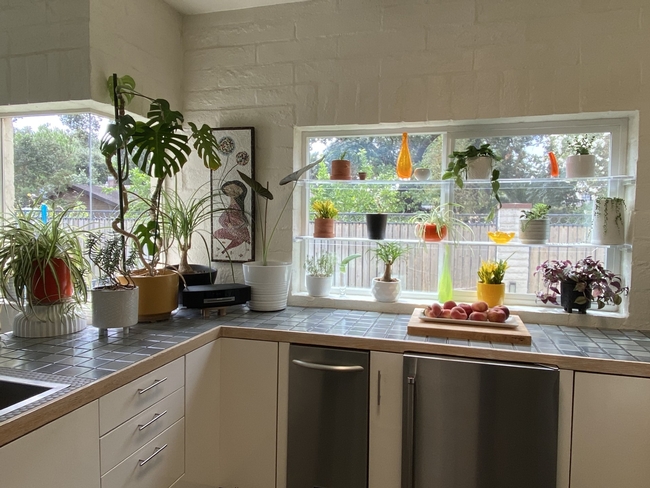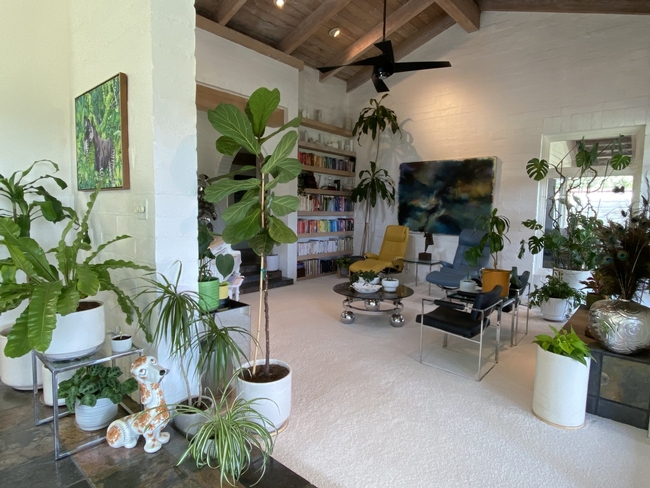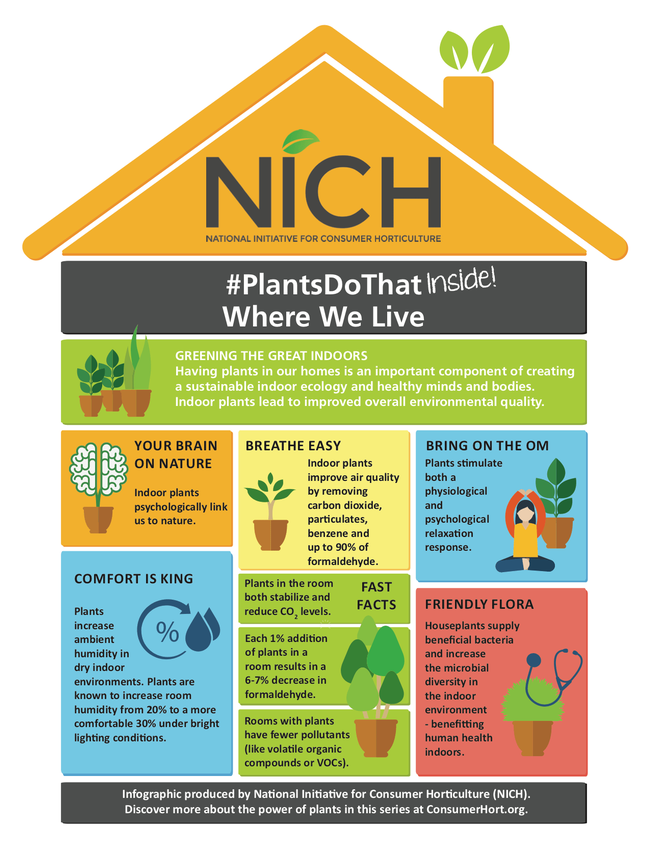- Author: Martha Martin
The third week of September is National Houseplant Week! According to the National Initiative for Consumer Horticulture, having plants indoors can be helpful. Please enjoy this article about houseplant aesthetics from one of our UC Master Gardeners.
You might live in a manse or cottage. You might consider yourself a minimalist or mid-century modern. Traditional labels become a verbal veneer when arranging houseplants. This article's focus is not on the care* of house plants or their cultural requirements. Rather it concentrates on the art of displaying house plants effectively. It reflects a potpourri of aesthetics, functionality, style, elegance, and personal preference.
Prior to entering your abode, carefully inspect the plant for potential problems. Co-mingling with existing plants comes after the plant is isolated for 2 plus weeks. During this time check for “unwelcome varmints.” Once it is determined the plant is pest free, visualize a striking and aesthetically pleasing location.
Fundamental design principles are interrelated to create harmony and cohesiveness. Emphasize the importance of a focal point in a visual arrangement. Spacing plants by focus allows a contrast in proximity, size, color, texture and shape. Just as gardeners are differentiated by appearance, plants and their containers offer varied perspectives by how they look and feel. Texture contrast is found on the leaf, the plant itself, the container and the stylistic home décor to which it enters.

Gardeners come in all shapes and sizes. When thinking of a house plant, choose a plant for leaf shape and the plant's configuration itself. Uneven lines of plants, whether vertical, descending, fleshy or sprawling, are softened by the design and type of container used.
In your home you may discover an empty white space with no visual elements. These visual blank canvases allow a grouping of plants to showcase their distinct beauty while maintaining ordered space between specimens.

As with gardeners, opposites attract. Contrast plants by differentiating color, texture, shape, and size to achieve subtle drama. Repeating patterns in both species and containers creates cohesiveness, balance, and unity. Without variety, gardens and indoor décor could become stodgy and dull. Intermingling differing objects with indoor plants achieves unexpected creativity.

Beauty is indeed reflected in the eyes of the beholder. Eclectic beauty moves side to side, up and down, chunky to narrow, trailing to vertical. Choice is freedom to create a unique, personalized aesthetic enhanced by house plants.
*To learn more about houseplants and download and/or print a handout on them, visit https://cestanislaus.ucanr.edu/Gardening_Publications/ and scroll to the bottom of the page.
Martha Martin has been a UC Master Gardener since 2022.


